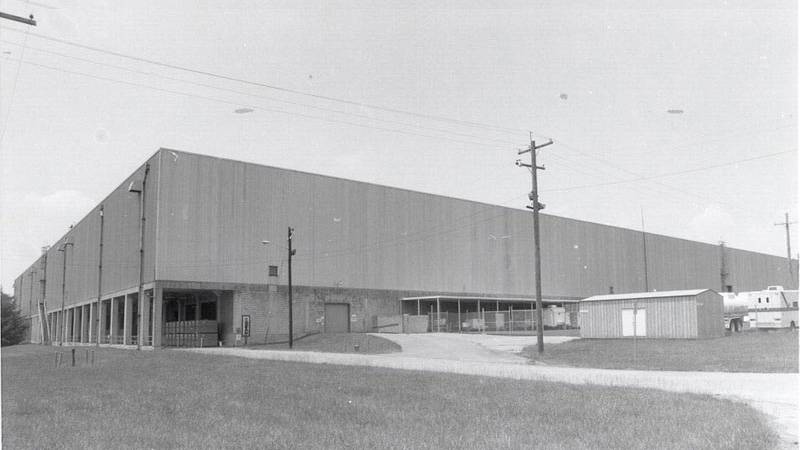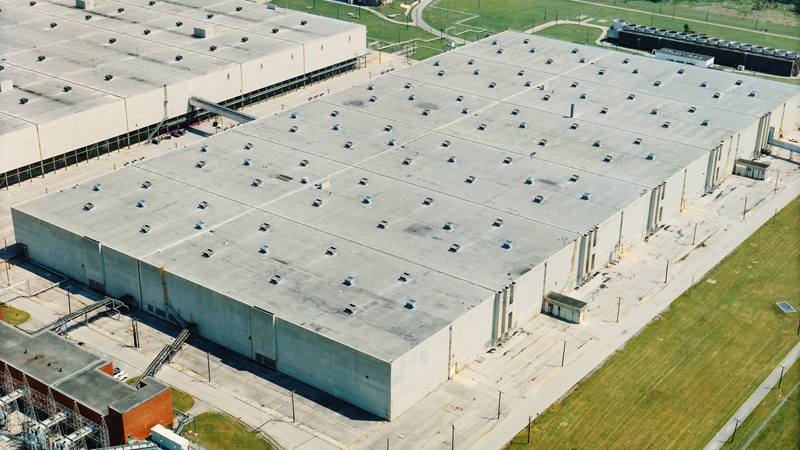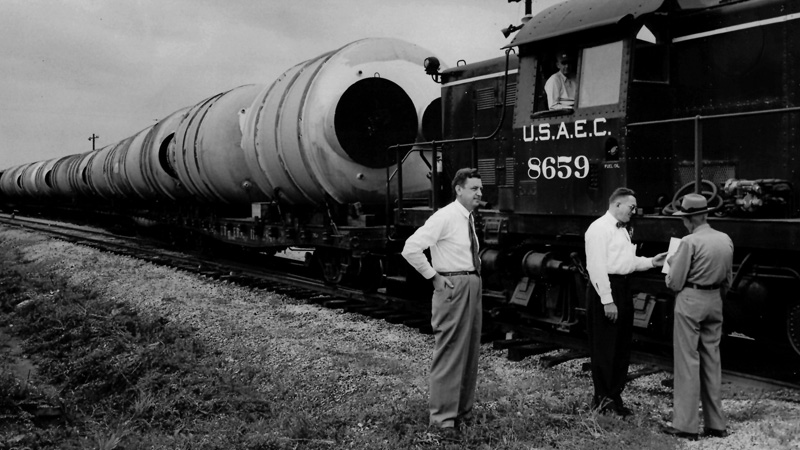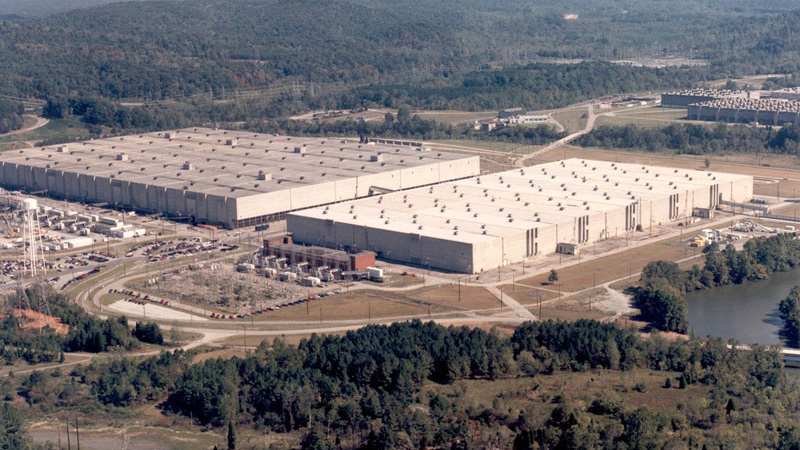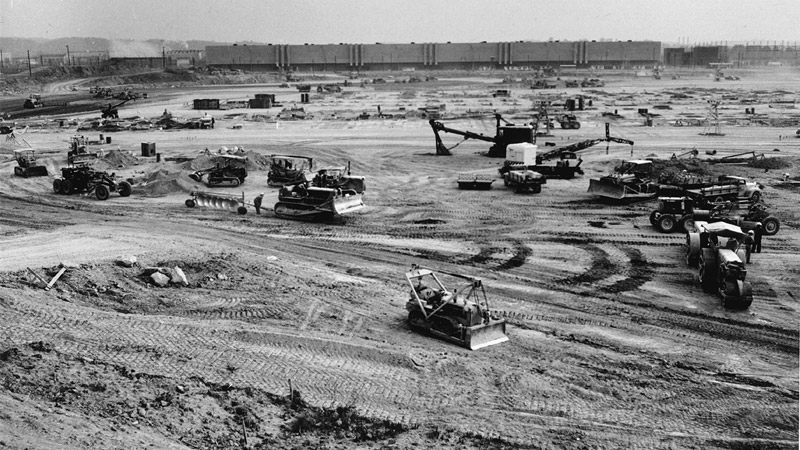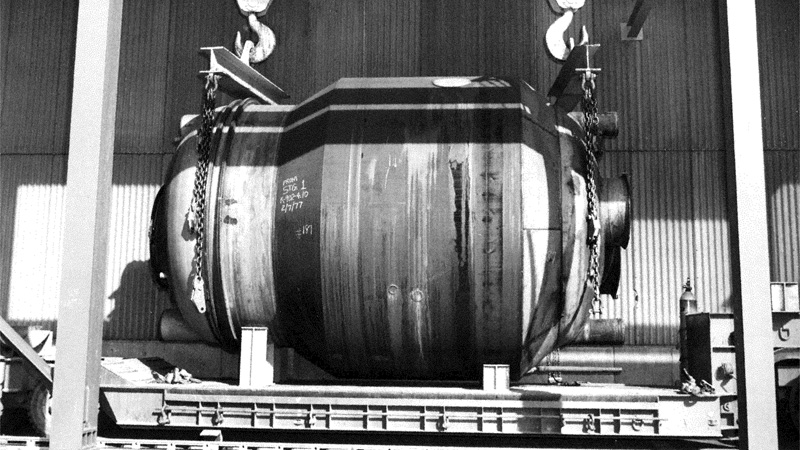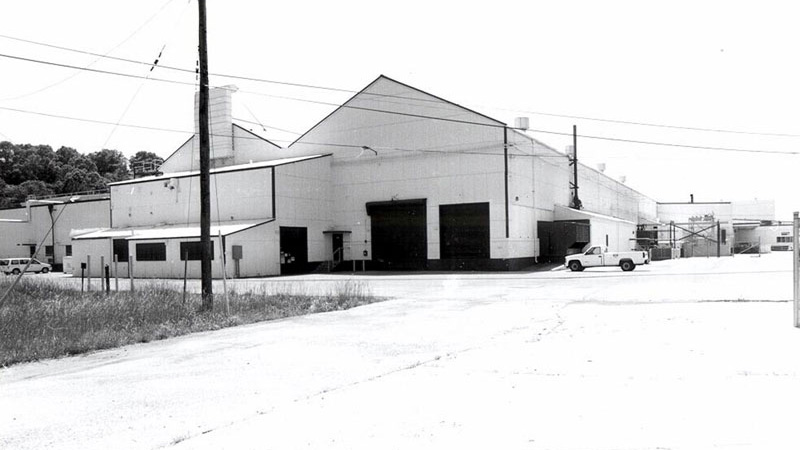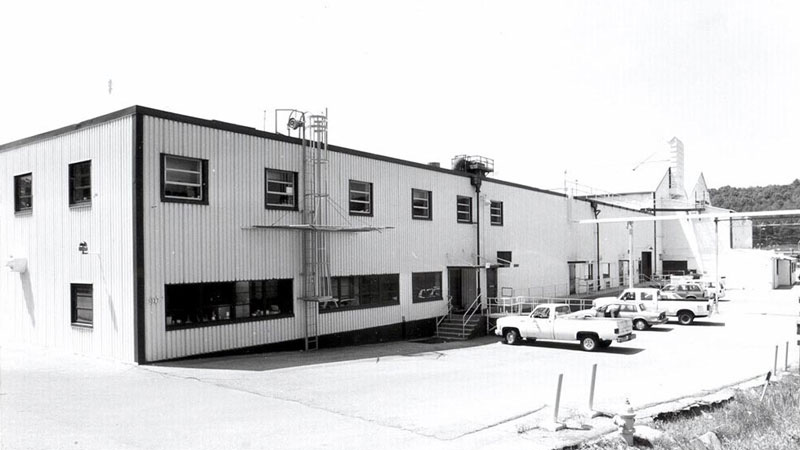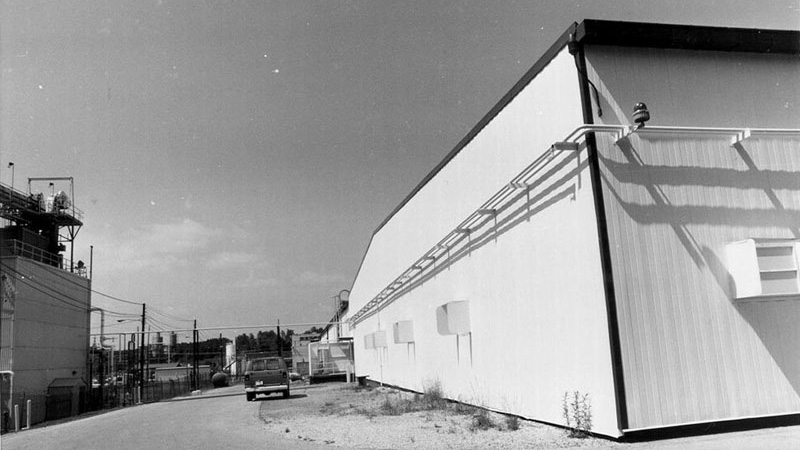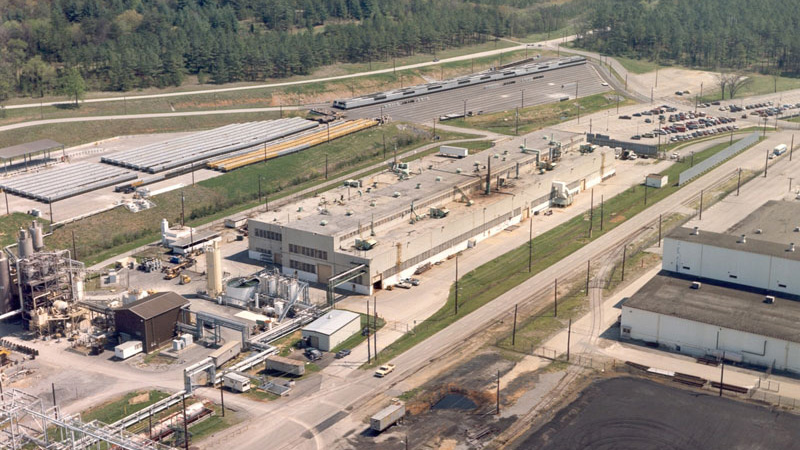COLD WAR EXPANSION
THE RACE CONTINUES
Shortly after K-25 delivered its mission to help build an atomic weapon and end World War II, another type of "war" unfolded. The "Great Power" alliance that had formed to defeat the Axis forces became strained even before the war ended in the Pacific. Suspicions, tensions, and regional armed conflicts pervaded the post-war world. On one side was the "Western" democracies, on the other the communist-controlled "East." From this "Cold War" emerged an arms race that would span decades.
The K-29 Building was the third gaseous diffusion facility built on the K-25 Site. Construction began in August 1949 and the plant was fully operational by January 1951. Like K-27, K-29 extended K-25's enrichment stages to increase uranium enrichment capacity.
Four years had elapsed between the construction of K-25 and K-29 and the lessons that ensued enabled engineers to build a more productive and efficient plant. K-29 was constructed in a two-floor layout, covering 582,000 square feet of floor space. In K-29, the process equipment was located on the upper floor, in the open air, which allowed for the inclusion of large overhead cranes that greatly assisted in installation, removal, and maintenance of new larger, heavier, '0' size converters and compressors. More efficient, multi-stage axial flow compressors with larger flow capacities replaced the centrifugal compressor designs used in K-25 and K-27. Only one compressor per stage was required in K-29 as opposed to the two compressors per stage in K-25 and K-27. Also, K-29 marked the first use of an evaporative coolant system as the primary system to cool process gas. The system design eliminated the need for coolant pumps, resulting in much less maintenance. K-29 included 300 enrichment stages arranged in 30 cells.
K-29 operated in series with K-27 and K-25 (extending the enrichment cascade) and contributed to the overall K-25 Site mission to produce enriched uranium for nuclear weapons and later for the nuclear power industry. K-29 was shut down in 1985 along with the remainder of the site's production facilities; it was demolished in 2006.
In September 1951, a fourth gaseous diffusion building, K-31, joined the K-25 uranium enrichment complex. K-31 was almost triple in size to K-27 and K-29 at 1.66 million square feet of floor area. The equipment in K-31 included 600 stages of even larger converters and axial-flow compressors than those in K-29. Like K-29, K-31 process equipment was installed on the upper floor of the two-level facility with auxiliary equipment located on the ground floor. K-31 was placed in service in series with K-29, K-27, and K-25 and contributed to the overall defense and commercial missions until shutdown of the K-25 site production facilities in 1985.
K-31 was demolished in 2015.
ATOMS FOR PEACE
In late 1953, as superpower stockpiles continued to grow, U.S. President Dwight D. Eisenhower offered an alternative to the death, destruction, and disquiet of atomic warfare. In a speech to the United Nations General Assembly, Eisenhower proposed the creation of the International Atomic Energy Agency, established under the guidance of the United Nations. Its principal responsibility would be the "safe, secure and peaceful use of nuclear technologies." President Eisenhower's movement became known as "Atoms for Peace."
A final process building was added to the K-25 Site cascade in October 1954. The K-33 Building surpassed K-25 in floor area with 2.8 million square feet. It followed K-29's two-level layout but used larger converters (000) and axial-flow compressors and contained 640 enrichment stages. A new feed unit that supported all K-25 Site production facilities was included in the north end of the building.
K-33 joined the site's gaseous diffusion cascade in series with K-31, K-29, K-27, and K-25 and contributed to the overall defense and energy missions until shutdown in 1985.
K-33 was demolished in 2011.
The heart of the gaseous diffusion process is the barrier material that separated the uranium-235 and uranium-238 isotopes. During K-25 construction, barrier material was manufactured by Houdaille-Hershey Company in Decatur, Ohio, and sent to the Chrysler Plant in Detroit where it was assembled into converters. These converters were then shipped by rail to East Tennessee for placement into the K-25 process building. In December 1947, it was decided to move all barrier production to the K-25 Site. K-1037, a former warehouse used during construction of the K-27 Building to store equipment, was converted into the barrier production facility. When fully operational, K-1037 produced barrier material for all subsequent gaseous diffusion buildings at the K-25 Site as well as facilities at Paducah, Kentucky, and Portsmouth, Ohio. The K-1037 Barrier Plant was demolished in June 2019.
Built in 1954, the Decontamination and Uranium Recovery Facility (K-1420) provided radiological decontamination, uranium recovery, and metal plating capabilities for the site.
Diffusion cascade compressors, converters, pipes, valves, and instruments of all sizes were disassembled, cleaned, and decontaminated in K-1420. Uranium was recovered from the resulting cleaning and decontamination solutions. Other operations within the building included mercury recovery and purification, oil reclamation and recovery, disassembly and decontamination of equipment from cascade support facilities, alumina leaching of process alumina traps, and a laboratory.
Plating facilities were installed in K-1420 in the mid-1960s. During the plating process, layers of thin nickel coating were applied to the internal surfaces of process equipment and piping to protect against corrosion from exposure to uranium hexafluoride.
The K-1420 Building was demolished in 2007.




